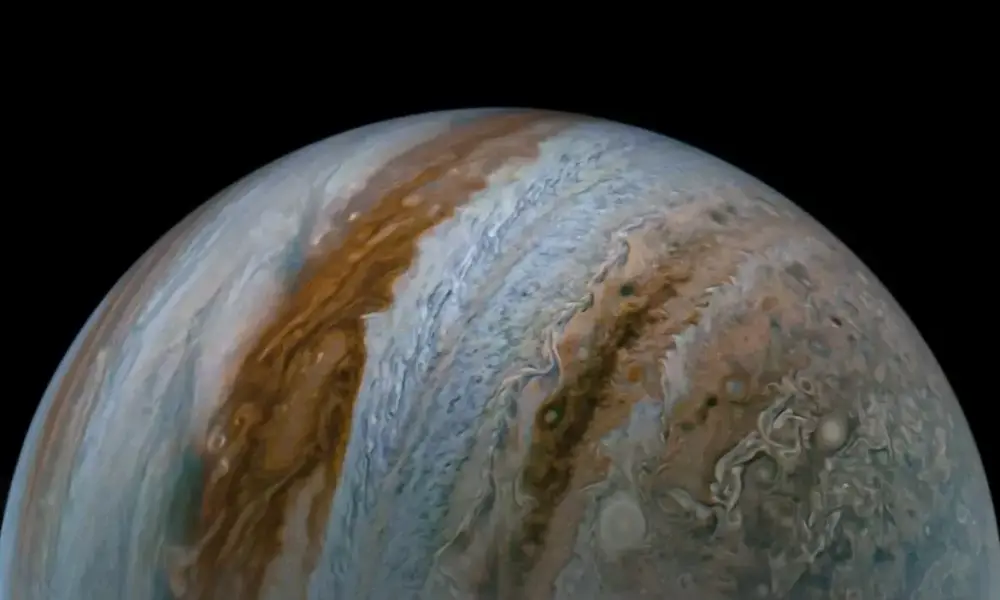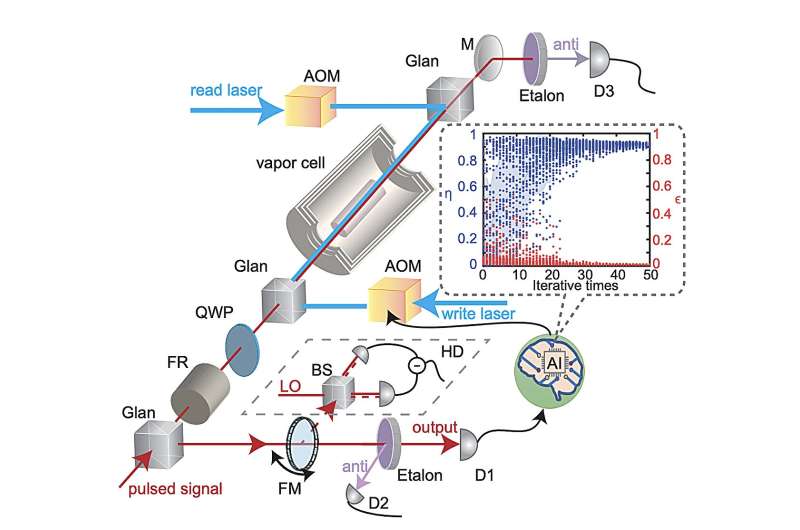Recent research from Rice University has illuminated the essential role that Jupiter played in shaping the early development of Earth. The study suggests that without Jupiter, primitive Earth could have drifted too close to the Sun, potentially making it incapable of supporting life as we know it.
The investigation began with a longstanding question among scientists: why did the earliest solid objects in the solar system not form simultaneously? Evidence from meteorites, which are rocky debris from space that falls to Earth, indicates the existence of two distinct generations of planet-building materials. The first group formed rapidly within the first million years, while the second group, which created the rocky bodies closer to Earth, Mars, and Venus, emerged two to three million years later.
To unravel this mystery, researchers conducted complex computer simulations of the young solar system. The findings, published in the journal Science Advances, highlight Jupiter’s influence as a key factor. Previously, no model fully explained the age discrepancy among the ancient materials used to build planets. This study integrates the growth of Jupiter, the movement of dust, and the formation of asteroids into a cohesive explanation.
Jupiter’s Influence on Planetary Development
According to Baibhav Srivastava, a planetary scientist and co-author of the study, Jupiter’s immense mass—more than double that of all other planets combined—was crucial in preventing Earth and its neighboring planets from migrating too close to the Sun. He noted, “Our Earth might have become a ‘super-Earth.’ This may have significant implications for the potential habitability of Earth as well, since it may have left the ‘Goldilocks’ zone of the solar system.”
The Goldilocks zone refers to the habitable area around a star where conditions are just right for liquid water to exist. Many scientists refer to Jupiter as the architect of the solar system due to its substantial gravitational pull, which has influenced the orbits of other planets and helped to organize the gas and dust from which they formed.
As Jupiter grew, it reshaped its surroundings by draining gas from the inner region and creating areas of higher pressure. These modifications effectively trapped dust and formed clumps of material, known as “dust traps.” This process enabled the generation of new solid objects long after the original formations, thus providing a natural explanation for the age gap observed in rocky space materials.
The timing of this second wave aligns with that of ordinary chondrites, which are the most commonly found type of stony meteorite on Earth. Scientists estimate the ages of meteorites’ parent bodies by measuring isotopes, specific variations of elements, within them. By analyzing how much of the original isotope remains compared to how much has decayed, researchers can determine when the rock solidified, akin to carbon dating but using heavier elements like lead, rubidium, and strontium.
By the time the second generation of rocky materials solidified, Earth was already in the process of formation. Therefore, these later materials likely had minimal contribution to the planet’s mass. The research supports the notion that Jupiter must have formed very early, within the first two million years of the solar system’s history. This early growth allowed Jupiter sufficient time to manipulate and structure the available gas and dust surrounding the Sun.
Implications for Understanding Solar System Formation
The findings resonate with what astronomers currently observe in other developing star systems using advanced telescopes. André Izidoro, a Rice assistant professor and study author, remarked, “Looking at those young disks, we see the beginning of giant planets forming and reshaping their birth environment. Our own solar system was no different.”
Jupiter’s early development left a signature that researchers can still decipher today from the meteorites that fall to Earth. This groundbreaking study not only enhances our understanding of the solar system’s formation but also raises intriguing questions about the potential conditions for life on other planets.
The implications of this research extend far beyond simple celestial mechanics. Understanding the factors that enabled Earth to become a habitable planet may provide insights into the search for life elsewhere in the universe. The intricate dance of gravitational forces and material distribution, as shaped by Jupiter, continues to intrigue scientists and deepen our knowledge of planetary systems.







